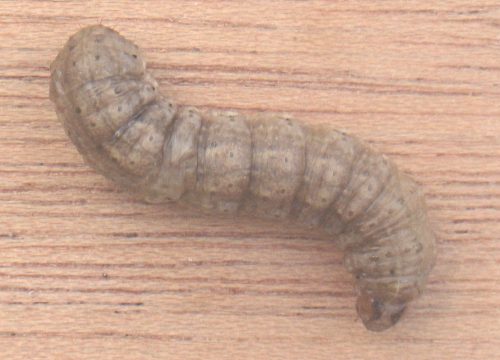Cutworms are the larvae of owlet moths.
Do not confuse with:
Leatherjackets, the larvae of the crane fly
Cutworm (Agrotis). Cutworms are not worms, biologically speaking, but the larvae of caterpillars.
Cutworms are moth larvae that hide under litter or soil during the day and come out at night to feed on plants. A larva attacks the first part of the plant it encounters, mostly the stem and cuts it off accordingly; hence the name cutworm.
Cutworms are the larvae of owlet moths (Noctuidae) – Fi: dark sword-grass (Agrotis ipsilon) and turnip moth (Agrotis segetum). Cutworms are not to be confused with leatherjackets – the larvae of the Crane fly (Tipulidae). Cutworms roll up when touched; leatherjackets don’t. Cutworms eat both underground (roots) and aboveground parts of herbaceous plants (lettuce, endive). They do this mainly at night and the stem of the plant is a favorite. There are two generations per year. Cutworms overwinter as a caterpillar or as a pupa.
Affected plants
- Vegetable garden: seedlings, young plants
- Lettuce
- Endive
- Beans
- Jerusalem artichoke
Control
Water the immediate vicinity of affected plants liberally, so that the substrate is soaked with water.

